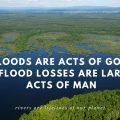How Many Rivers Are There in the World?
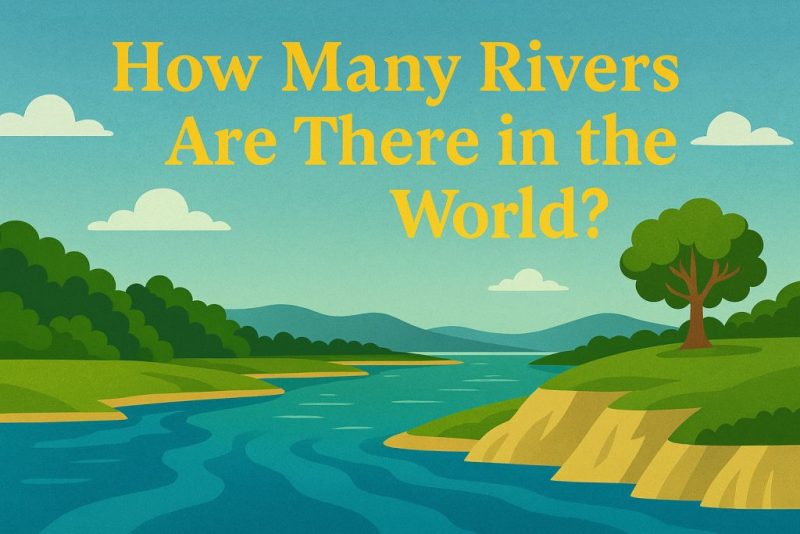
How many rivers flow across the world? While the exact count is unknown, estimates suggest tens of thousands, each carving its own path through the Earth.
Imagine standing on the edge of a vast, winding river, its waters stretching across continents and weaving through landscapes. Now, consider this: How many rivers flow across the entire world? While no one can pinpoint an exact number — because rivers are as diverse as the landscapes they carve — estimates suggest there are tens of thousands. From the mighty Amazon to the countless hidden streams that only emerge after heavy rainfall, the number is staggering. But why is this question so elusive? Let’s dive into the complexity of counting the rivers that shape our planet.
Still wondering about rivers? Dive into “What Are Rivers?”
Rivers and Streams: A Fluid Distinction in a Land of Water
Where does a stream end and a river begin? It’s a question without a sharp answer—one that has perplexed hydrologists and writers alike. I encountered the same ambiguity while planning Rivers of Croatia, a book that set out to celebrate the country’s flowing lifelines. For practical reasons, we chose to highlight 18 major rivers and roughly 80 others deemed worthy of mention. The list wasn’t exhaustive, nor did it aim to be. This wasn’t a scientific catalogue, but a popular journey—rooted in science, yet shaped for curiosity, inspiration, and awe.
But numbers on their own mean little without context. So let’s put things into perspective.
Croatia, my homeland, is a small but strikingly diverse country—covering just over 55,000 square kilometers. Nestled within the temperate climate belt between 40° and 60° latitude, it enjoys a relatively moderate climate, free from frequent extremes. Here, precipitation is spread more evenly throughout the year, and vegetation thrives in a generous growing season—true to the “temperate” label.
On average, Croatia receives about 1,000 mm³ of precipitation annually. But what truly defines the country is not just how much water it receives—but how that water flows.
Hydrogeologically, Croatia is split almost in half. To the north and east lies the Pannonian Plain: a gentle, fertile expanse of alluvial soils, where rivers like the Sava and Drava weave through lowlands and wetlands. In stark contrast, the south reveals a wild, water-carved land of limestone—the karstic world of the Dinarides, where rivers vanish underground, only to resurface in turquoise springs and thunderous waterfalls.
This dual nature—of plains and mountains, surface rivers and subterranean torrents—gives Croatia its distinct hydrological character. It’s a land where water tells many stories: slow and winding, or fierce and vanishing; wide and muddy, or crystal-clear and fleeting.
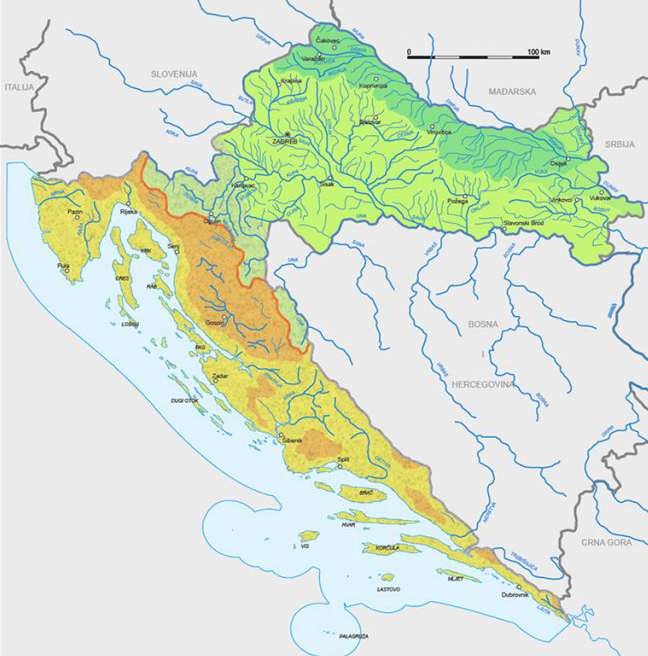
Scaling Up: Croatia in the Context of a River-Woven Continent
Let’s widen the lens for a moment.
If we extrapolate the surface area of Croatia—a compact 55,000 km²—to the full scope of Europe, we’re talking about a landmass of roughly 11.2 million square kilometers. That includes not only the familiar core of the continent, but also the European part of Russia, parts of Kazakhstan (within the Ural River Basin), the Caucasus, Armenia, Cyprus, and portions of Turkey. Geographically, Europe stretches from the Ural Mountains in the east to the Caucasian Alps in the southeast, bounded more by watersheds than politics.
With such vast and diverse terrain, it’s no wonder rivers play a vital role in shaping Europe’s landscapes, cultures, and borders. According to the authors of the acclaimed book Rivers of Europe, there are over 150 transboundary rivers—waterways that cross or define the borders of two or more countries. These rivers are not just lines on a map—they are shared lifelines, requiring cooperation, diplomacy, and shared stewardship.
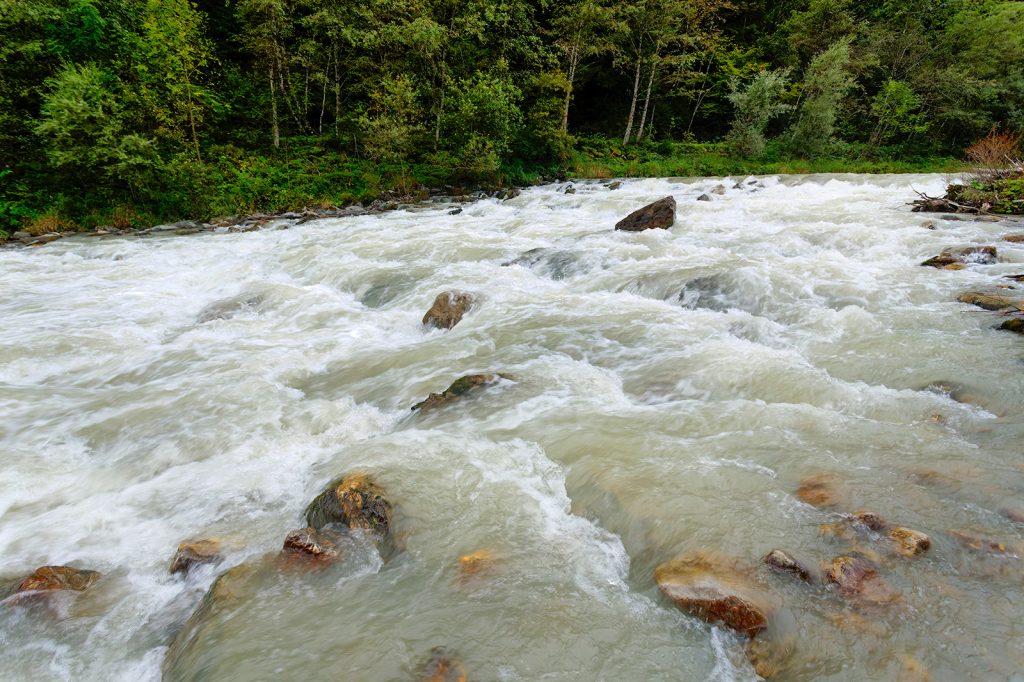
Even a simple attempt to count Europe’s rivers reveals the continent’s watery complexity. The English-language Wikipedia entry, “List of rivers of Europe,” catalogs 535 rivers longer than 100 kilometers. But is this list complete? Likely not. My educated guess is that, once medium and smaller rivers are included, the number climbs into the thousands—perhaps tens of thousands.
Still, the great rivers stand out. Europe’s three largest rivers—the Volga, the Danube, and the Dnepr—together drain about one-quarter of the continent. And yet, on a global scale, even these mighty arteries are modest: their drainage basins rank only 14th, 29th, and 48th worldwide. In Europe, they are giants. In the world, they are part of a much larger hydrological chorus.
Across the Ocean: The River Giants of North America
For comparison, let’s cross the Atlantic to a land where rivers stretch like veins across an entire continent.
The United States is home to more than 250,000 rivers, totaling a staggering 3.5 million miles of flowing water. To put that in perspective: you could circle the globe 140 times and still not match the length of those rivers.
Of course, the word “rivers” here includes streams of all sizes, from mountain brooks to mighty flows. But even among giants, the U.S. rivers command respect.
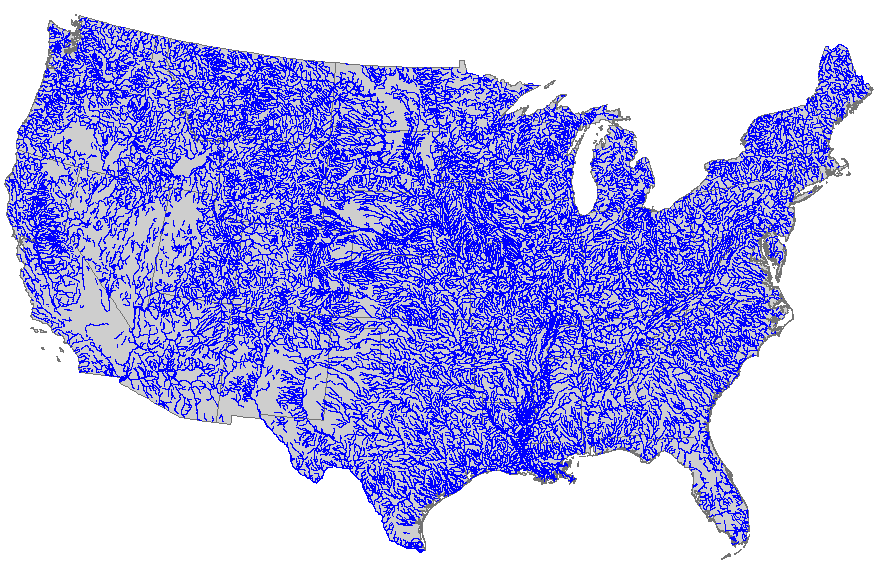
The Mississippi River, the country’s largest by volume, pours 593,000 cubic feet of water per second into the Gulf of Mexico. Meanwhile, the longest river, the Missouri, snakes across roughly 2,500 miles of heartland before joining the Mississippi near St. Louis.
Both continents are braided with rivers, yet they tell different stories. In Europe, rivers are often shorter, more politically entangled, yet rich with history and culture. In North America, they are longer, wilder, more solitary—still carving out the landscapes around them.
A River System That Breathes Like a Continent
And then… there’s South America—home to the Amazon Basin, the largest river catchment in the world. If Europe’s rivers braid borders and the U.S. rivers span heartlands, the Amazon breathes like a continent of its own.
The Amazon Basin is drained by the mighty Amazon River and its countless tributaries, sprawling across an area of 7,500,000 square kilometers—that’s about 40% of the South American continent. It stretches across eight countries: Bolivia, Brazil, Colombia, Ecuador, Guyana, Peru, Suriname, and Venezuela, forming a natural network of water and life unmatched anywhere on Earth.
At the heart of the basin lies Amazonia, a living, breathing green engine. With over 5.5 million square kilometers of dense tropical forest, it is not only the largest rainforest in the world, but also one of the most vital ecosystems for global biodiversity and climate regulation.
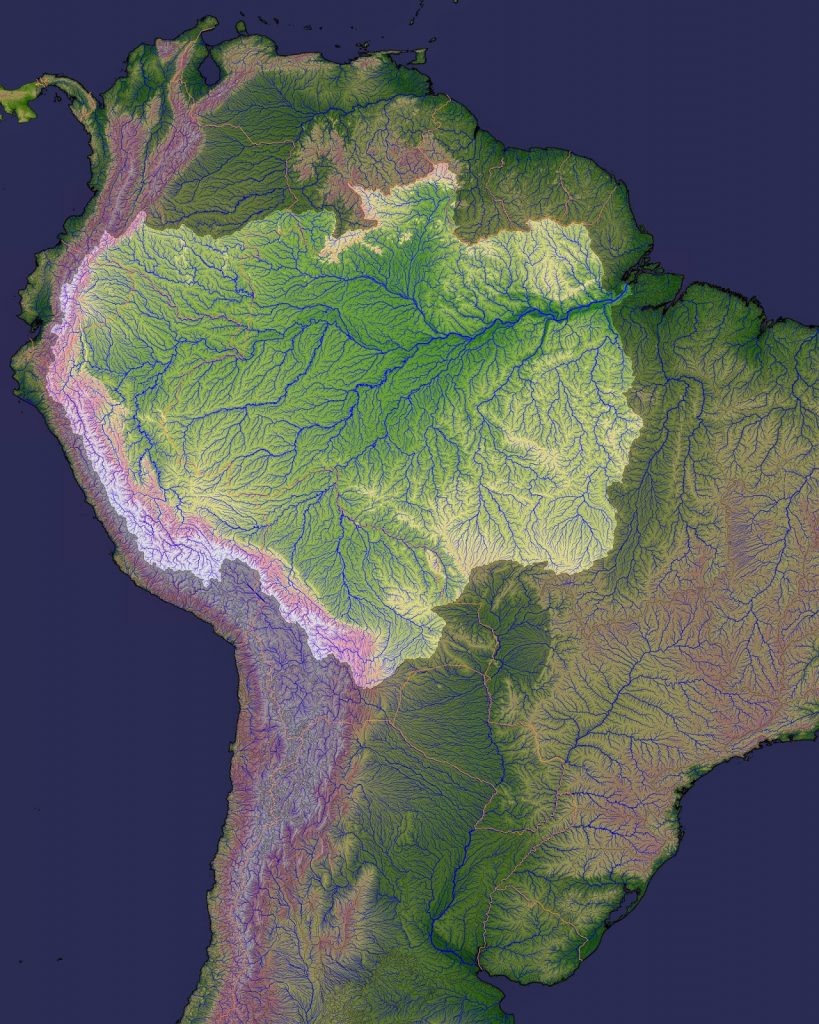
And then there are the rivers themselves. The Amazon River is not just long (second only to the Nile in length, depending on the measurement), but colossal in volume—discharging more water than the next seven largest rivers combined. It is fed by over 1,100 tributaries, and twelve of those stretch beyond 1,500 kilometers, each one a river in its own right.
This is not merely a river system—it is a hydrological kingdom, one that dictates weather patterns, hosts entire biomes, and still, in places, defies mapping. The Amazon does not run through the rainforest—it is the rainforest. The river and the forest are one continuous body, pulsing with water, mist, and life.
How Many Rivers Are There in the World?
It’s a deceptively simple question, but the answer is anything but.
There’s no universally accepted number—no neat total that captures the dynamic, living network of waterways across our planet. It depends on how you define a river, where you draw the line between a river and a stream, and what scale you choose to measure. Is it the Volga, winding through Russia? Or the unnamed rivulet threading quietly through a forest in Peru?
We know that Europe has at least 535 rivers longer than 100 kilometers, but likely thousands more of smaller stature. The United States claims over 250,000 rivers, thanks to a broad definition that includes nearly every stream and brook. And then there’s the Amazon Basin, whose colossal veins—over 1,100 tributaries, 12 of them longer than 1,500 kilometers—breathe across nearly half a continent.
If we try to count every flowing watercourse—every creek, brook, stream, and river—the total could soar into the millions.
And yet, the real answer may not lie in the number at all.
What matters is that rivers are everywhere: shaping landscapes, nourishing ecosystems, connecting civilizations, and carving deep into our cultural memory. From the karst springs of Croatia to the silt-laden arteries of the Mississippi, from the ancient Nile to the mysterious underground rivers of the Amazon, they tell stories of time, place, and flow.
So, how many rivers are there in the world?
Enough to remind us that water is not just a resource—but a rhythm, a legacy, a lifeline.

